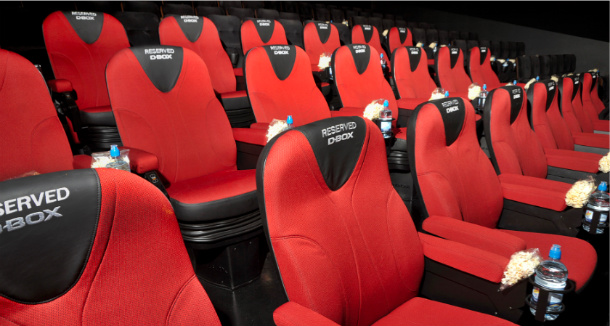Despite this limited and slow release, the notion of enhancing the experience and reality of a film seems to present some interesting opportunities that would very likely appeal to younger moviegoers. Through 4D, a variety of effects can be simulated to replicate rain, wind, car chases, crash landings, and so forth. In addition, 4D has the ability to emit varying smells to aid in a viewer’s understanding of the setting, which seems to provide a rather comical reality to the words of Marty DiBergi, who wanted to capture “the sights, the sounds…the smells of a hard-working rock band” in the 1984 mockumentary, This Is Spinal Tap. Alongside these effects that 4D has to offer, theaters have also begun to develop and expand the notion of 3D audio effects, which allows theaters to virtually place sound sources anywhere within a 3-dimenstional space. This would allow movies to audibly create a sense of depth in any given scene.
Of all the companies pushing this technology, one of the largest proponents is South Korean’s CJ 4DPlex, which views all cinematic experiences as an evolutionary process of storytelling that seeks to bring joy to audiences everywhere (Fuchs). According to Bruce Greenberg, the Hollywood-based senior VP of CJ 4DPlex, “2D allows audiences to watch the movie, 3D allows them to really see the movie, but 4D now allows them to be immersed with the movie.” Demonstrating their strong trust in the opportunities offered by this technology, CJ 4DPlex has started rapidly expanding its number of theaters. However, similar to arguments against 3D filmmaking, should the advent of 4D screenings be considered a gimmick?
Without a doubt, 4D theaters seem poised to particularly cater to the experience of viewing action-packed films, as film goer Josh from /Film noted in his experience while watching Harry Potter and the Half-Blood Prince in D-Box (Sciretta). Ultimately, while watching the movie, Joshua noted that he often found himself waiting impatiently through scenes containing dialogue and hoping for additional action sequences. Personally, I believe that this provides a very clear indicator of how 4D can be a distracting technology that allows the message of a movie to be lost in the “amusement park thrills” of experiences offered by 4D. However, the opportunities that 4D has to offer could be rather exciting if effectively used to enhance a film’s overarching message.
Works Cited
Fuchs, Andreas. "Moving pictures: An in-depth look at enhanced '4D' experiences." Film Journal International. 16 Aug 2013. Web. <http://www.filmjournal.com/filmjournal/content_display/news-and-features/features/technology/e3ibaaa998fe66e7ae0a9955035d6362c84>.
Sciretta, Peter. "Are D-Box Movie Theater Motion Seats a Gimmick or a Cinematic Revolution?" /Film. 20 Jul 2009. Web. <http://www.slashfilm.com/are-d-box-movie-theater-motion-seats-a-gimmick-or-a-cinematic-revolution/>.


 RSS Feed
RSS Feed
